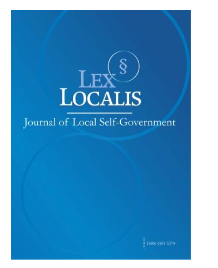ARCHITECTURAL CRAFTSMANSHIPWISDOMOF PRASAT PHANOM RUNGTOWARD THE DESIGN OFHYPOTHETICAL RECONSTRUCTION TO PROMOTE LEARNING
DOI:
https://doi.org/10.52152/801106Ključne besede:
Craftsmanship wisdomwisdom, Prasat Phanom Rung,Hypothetical reconstructions, Souvenirs that promote learningPovzetek
Phanom Rung Historical Park, a remarkable and beautiful ancient Khmer stone sanctuary in Thailand, is a popular destination for both domestic and international tourists. Its architecture showcases diverse elements from various periods, with the construction of each section employing distinct techniques and methods derived from ancient Khmer craftsmanship. Therefore, to promote learning about these technical traditions and artisanship through hypothetical visualizations and souvenir products, thereby adding value to the tourist attraction in line with government policies, this research aims To study the architectural craftsmanship wisdom of Prasat Phanom Rung. And to design Hypothetical reconstructions and souvenirs to promote learning based on the architectural craftsmanship wisdom of Prasat Phanom Rung.
This research employs a mixed-methods approach, integrating both qualitative and quantitative data collection. Qualitative data was gathered through field surveys and purposive sampling interviews with two experts/practitioners each, specializing in ancient Khmer architectural techniques and forms. The interview data was then cross-analyzed with information from other sources to inform the design of hypothetical visualizations.For the design of souvenir products, a dedicated design process was followed, incorporating insights from three purposively sampled souvenir design experts. These experts evaluated various souvenir concepts to identify the most suitable design for prototype development. Subsequently, quantitative data was collected from a sample of 399 tourists at Phanom Rung Historical Park, utilizing accidental sampling, to assess their satisfaction with the developed souvenir prototypes. The survey data was analyzed using descriptive statistics, specifically mean, standard deviation, and percentage, to interpret the findings.
The study of architectural craftsmanship at Prasat Phanom Rung reveals distinctive forms, techniques, and assembly methods. These include the adaptation of mortise and tenon joint techniques from woodworking to stone construction, various stone joining and layering techniques, and methods for transferring weight from upper to lower sections.The design of hypothetical reconstructions and souvenir products, aimed at enhancing learning about these technical traditions at Phanom Rung, significantly increased tourists' understanding of the diverse techniques employed in the castle's construction. Furthermore, the prototype souvenir products effectively reflected the unique identity and architectural craftsmanship wisdomof Phanom Rung, demonstrating high acceptance and demand for products that align well with the tourist attraction. The overall mean satisfaction score from the sample group was 4.62, with a standard deviation of 0.10.
This research highlights the value and importance of its findings, primarily in two key areas:Firstly, for tourists and interested individuals, this study deepens their understanding of the technical architectural craftsmanship wisdom at Prasat Phanom Rung. It can also serve as an inspiration for further study or as a case study for exploring Khmer architecture at other sites.Secondly, for relevant agencies and interested entrepreneurs, the findings offer a guideline for designing and developing other souvenir products that are consistent with local tourist attractions. Furthermore, the research can be utilized as a promotional tool to attract tourists disassemblable souvenir productsand stimulate the local economy within the tourist area. This aligns with government policies aimed at promoting creative tourism by leveraging cultural capital in the form of traditional wisdom and craftsmanship.
The aforementioned research highlights the intergenerational transfer of knowledge, stemming from the application of various techniques and methods by ancient Khmer artisans. This led to the development of engineering wisdom, evident in the construction of architectural structures at Prasat Phanom Rung. This accumulated knowledge subsequently informed the creation of a hypothetical model and the further development of disassemblablesouvenir products. These products are designed to promote learning by showcasing distinctive and iconic engineering wisdom and techniques unique to Prasat Phanom Rung.Based on the foregoing, the research management plan can be summarized in the following diagram.
Prenosi
Objavljeno
Številka
Rubrika
Licenca
Avtorske pravice (c) 2025 Lex localis - Journal of Local Self-Government

To delo je licencirano pod Creative Commons Priznanje avtorstva-Nekomercialno-Brez predelav 4.0 mednarodno licenco.








